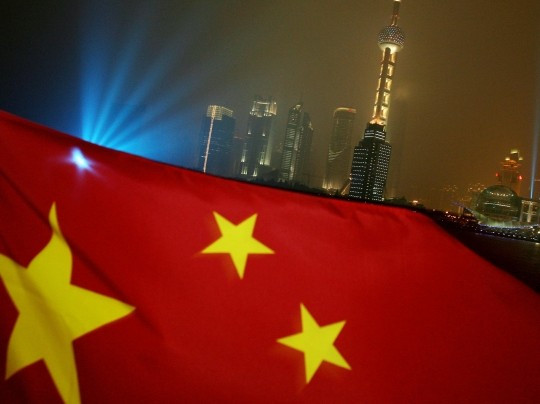China Steps Up Currency Liberalisation Plans After Shock Rate Cut

China hit the markets with its second surprise interest rate cut in less than a month, in a bid to bolster its slowing economy and push forward on banking policy changes.
The People's Bank of China (PBOC) slashed the one-year lending rate by 0.31 basis points (bps) and the one-year deposit rate by 0.25 bps.
China also allowed banks to offer bigger discounts on their lending costs after it revealed that lending rates will be allowed to fall to 70 percent.
"The latest rate cuts came just less than one month after the previous cut, behaviour that is reminiscent of 2008. Clearly, the rapid succession of easing moves is a signal of substantial concern about the state of the Chinese economy," says Klaus Baader, economist at Societe Generale. "Coming shortly ahead of key data releases, it suggests that the latest batch of economic indicators is likely to be weak. That would include inflation, which we expect to have dropped to 2.2 percent year-on-year in June from 3.0 percent in May, which would go a long way to allay policy makers concern about inflation pressures."
In 2008, when the credit crisis swept across the globe and naturally hit trade hard, Wen pledged to kick-start the economy with more investment projects and subsequently prompted Beijing to roll-out a 4 trillion yuan fiscal stimulus plan.
While many have interpreted the PBOC move to lower rates as just a definitive step towards supporting economic growth in the face of the European debt crisis, others suggest the effort has broader implications for the nation's tightly-controlled banking sector.
In a note last month, Barclays Capital was keen to point out China is keen to move forward to its plan for currency liberalisation.
"Clearly, political developments in the Euro area are vital, but the main focus on Thursday was on central bank policy," says Paul Robinson, analyst at Barclays Capital. "(The PBOC) cut its policy rates and made a number of other important moves which our Chinese economists interpret as a significant move towards interest rate liberalisation."
Currency Liberalisation
The step towards financial liberalisation overall is a key factor for China, which has taken a number of steps to deregulating its market and making it more open to foreign participants.
"The government is trying to strike a better balance between stabilizing growth in the short term and adjusting structure in the long term," said Peng Wensheng, chief economist in Beijing at China International Capital Corp, who worked at the International Monetary Fund and Hong Kong's central bank.
China's economy slowed over the past year but GDP growth figures are still far higher than the ailing Eurozone.
Analysts have downgraded growth projections across the board and consensus sees China's GDP slowing to around 7.9 percent. At-face-value, the downgrade seems low, compared to previous years of growth of 9 percent - 10 percent.
However, the government, especially over the last 18 months, has been trying to engineer a slowdown and curb inflationary pressures and rebalance the economy.
As soon as the first interest rate cut was implemented at the beginning of June this year, analysts tipped China to be moving towards a market where interest rates will be set by the market, and developing financial markets so that credit can be allocated more efficient way, rather than by the government; liberalisation.
"In our opinion, the cut in the floor for lending rates should also be regarded as a move towards interest rate liberalisation in China," says Fleming Nielsen, analyst at Danske Bank. "Commercial banks now have increasing flexibility to set their own lending rates. The implication is that the leading benchmark interest rates are becoming less and less important and we should increasingly start to look at the interest rate in the interbank market. The next logical step for China would be to define a new leading interest rate - possibly a target for interest rates in the interbank market as in the US and Japan."
"We see this move as a prelude to interest rate deregulation," says Woon Khien Chia, analyst at RBS. "While gradually making banks more competitive by cutting down their guaranteed interest profit margin, the next step is probably to switch the policy targets from commercial rates to market rates such as a repo-reverse repo rate corridor."
© Copyright IBTimes 2025. All rights reserved.






















